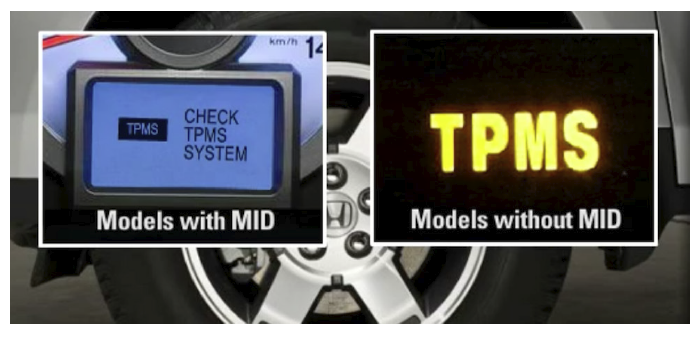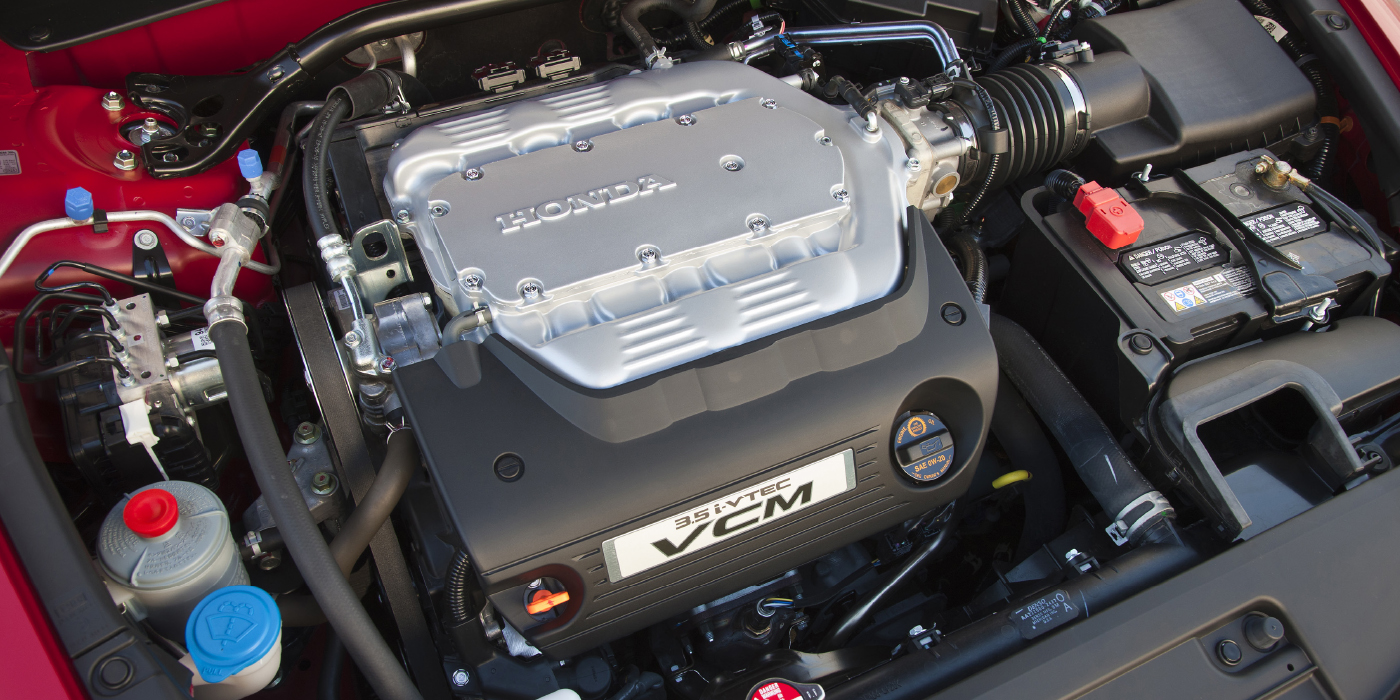Indirect Tire Pressure Monitoring Systems (TPMS) are systems that do not have air pressure sensors inside the tires. Rather, they detect a low tire by comparing relative wheel speeds via the Anti-lock Brake System (ABS) wheel speed sensors. When a tire loses air, its diameter decreases slightly.
Older indirect TPMS are not as sensitive to changes in tire pressure as direct systems that actually monitor the air pressure inside the tire, but they are not as expensive either.
One of the weaknesses of older indirect systems is that they may not turn on the warning light if all the tires are underinflated by a similar amount. If the recommended pressure is 32 psi, but all the tires are 24 psi (down 25%), the system won’t know there’s a problem because all the tires will be rotating at the same speed when the vehicle is being driven.

For Honda’s indirect TPMS systems, there are three magic numbers in the form of 30-60-20. Driving at 30-60 mph for 20 minutes is necessary to recalibrate the system. The process is initiated by pressing the TPMS reset button or information center in the instrument cluster.
Codes & Fail-Safe Modes
Hondas typically have two TPMS lights in the instrument cluster for direct systems. One light is the ISO-standard tread light that indicates there is a low tire. The other light is a “TPMS” (spelled out) light that is a warning/MIL indicator light. When a Honda TPMS system detects a problem, the TPMS control unit sets a code, but shifts to fail-safe mode and does not alert the driver to low tire pressures. Once the code is set, on the next key cycle, the TPMS light will flash between 30-90 seconds and then remain on. A healthy system will flash the light for two seconds and then turn off.
TPMS codes in the non-volatile memory will not be cleared by disconnecting the battery. Clearing a code will require a scan or TPMS tool that can communicate with the TPMS module. The memory can hold all the TPMS codes that could possibly be set. But, when the same code is detected more than once, the most recent one overwrites the previous one, so only the latest DTC of each type is stored.
Honda indirect TPMS systems do not have air pressure sensors inside the tires. Rather, they detect a low tire by comparing relative wheel speeds via the anti-lock brake system (ABS) wheel speed sensors. When a tire loses air, its diameter decreases slightly. The highly popular Honda Accord switched to indirect TPMS for the 2013 model year. Recalibrating the system should be performed when the inflation is corrected or changed. The procedure does not involve any tools. The calibration is initiated by either a TPMS reset button below the steering wheel or using a series of button presses in the i-Mid driver information center. You can initiate the procedure but let the customer do the driving.
Before You Start
- Make sure the vehicle is stopped and the vehicle is in neutral or park.
- Make sure all the tires are the same size and type.
- Set the tire pressures to the recommended cold inflation values listed on the driver’s door jam.
- Turn the ignition on.
Calibration for the 2013-’15 Accord (except Touring), 2014 CR-V and 2015 Fit
Press and hold the TPMS button underneath the left side of the dashboard until the Low Tire Pressure/TPMS indicator blinks twice. If the indicator does not blink, press and hold the button again. Calibration will be complete after 20 minutes of cumulative driving at 30 to 60 mph.
Calibration for the 2013-\’15 Accord Touring, Hybrid, Plug-In
- Using the display and steering wheel controls, select “Vehicle Settings,” then press the SEL/RESET button. TPMS Calibration will then come up.
- Press SEL/RESET again. The display switches to setup where you can select either cancel or calibrate.
- Select calibrate, then press the SEL/RESET button. If successful, you will see “Calibration Started.” If you see “Calibration Failed to Start,” repeat steps 2 and 3. Calibration will be complete after 20 minutes of cumulative driving at 30 to 60 mph.
Calibration for the 2014 Civic
- Using the i-Mid and steering wheel controls, press MENU and go to Vehicle Menu.
- Select Customized Settings, then press the SOURCE button.
- Select TPMS Calibration, then press the SOURCE button. The display switches to a customization screen where you can choose between Cancel or Initialize.
When calibration is complete you will see TPMS has been initialized followed by a return to the customization menu. If you see “Unable to initialize TPMS,” repeat steps 3 and 4. Calibration will be complete after 20 minutes of cumulative driving at 30 to 60 mph.














